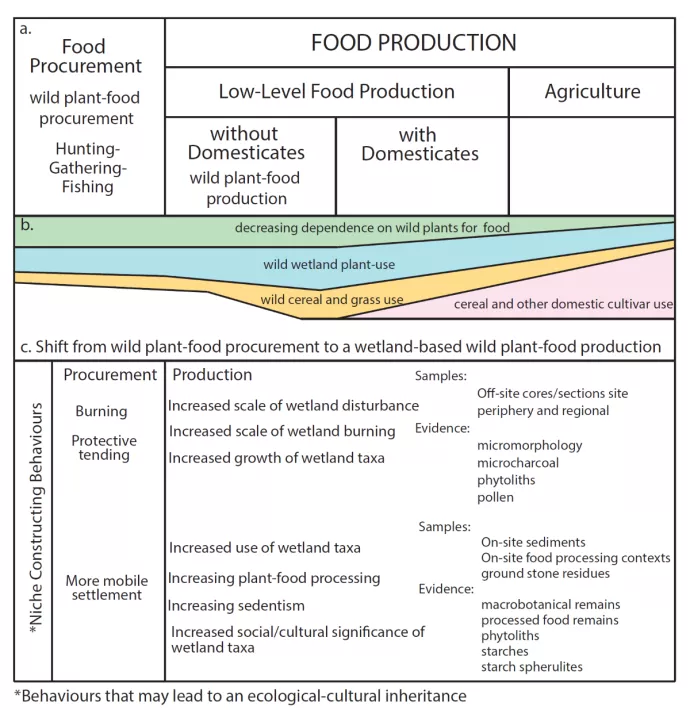
Project overview
Agriculture changed humanity and the planet. But remarkably our understanding of plant-use and the evolution of human-environment interactions during the long transition to agriculture (~25-8k cal. BP) in the Levant is limited. There are two key issues: the uneven plant record due to poor macrobotanical preservation; and the lack of off-site sediments and datable material for paleoenvironmental analysis. EMERGENCE will employ machine learning (ML) generated phytolith evidence (robust inorganic silica ‘casts’ of plant-cells) and microbotanical and geoarchaeological methods to study an unprecedented number of archaeological and paleoenvironmental sites. The project focuses on the understudied wetland environments in the Southern Levant (Israel and Jordan) which are crucial for studying the development of food production for three reasons: first, wetlands enabled hunter-gatherers to develop more sedentary lifestyles; second, wetlands support plant species which increase production under human disturbance; and third, wetlands produce a depositional environment which preserves sediment records.
EMERGENCE will examine the origins of agriculture as an emergent phenomenon. Emergent phenomena are entities that are more than the sum of their parts, arising from the interactions of their constituent parts with each other. Many biological systems exhibit emergent behaviour (e.g., flocks of birds, schools of fish). However less commonly considered is the type of emergence that occurs from interactions through time (e.g., in coral reefs). The build-up of complex, non-linear human-environment interactions in prehistory will link human niche construction dynamics to emergent phenomenon. This project will provide new insights into the changing character of plant food production and assess how human niche construction in and around these anthropogenic wetlands over deep time produced a compounding effect integral to the emergence of agriculture.
Related publications
Ramsey, M. N.
accepted Ecological-Cultural Inheritance in the Wetlands: The Non-Linear Transition to Plant-Food Production in the Southern Levant. Vegetation History and Archaeobotany.
Images


View the above diagram as a PDF file:
